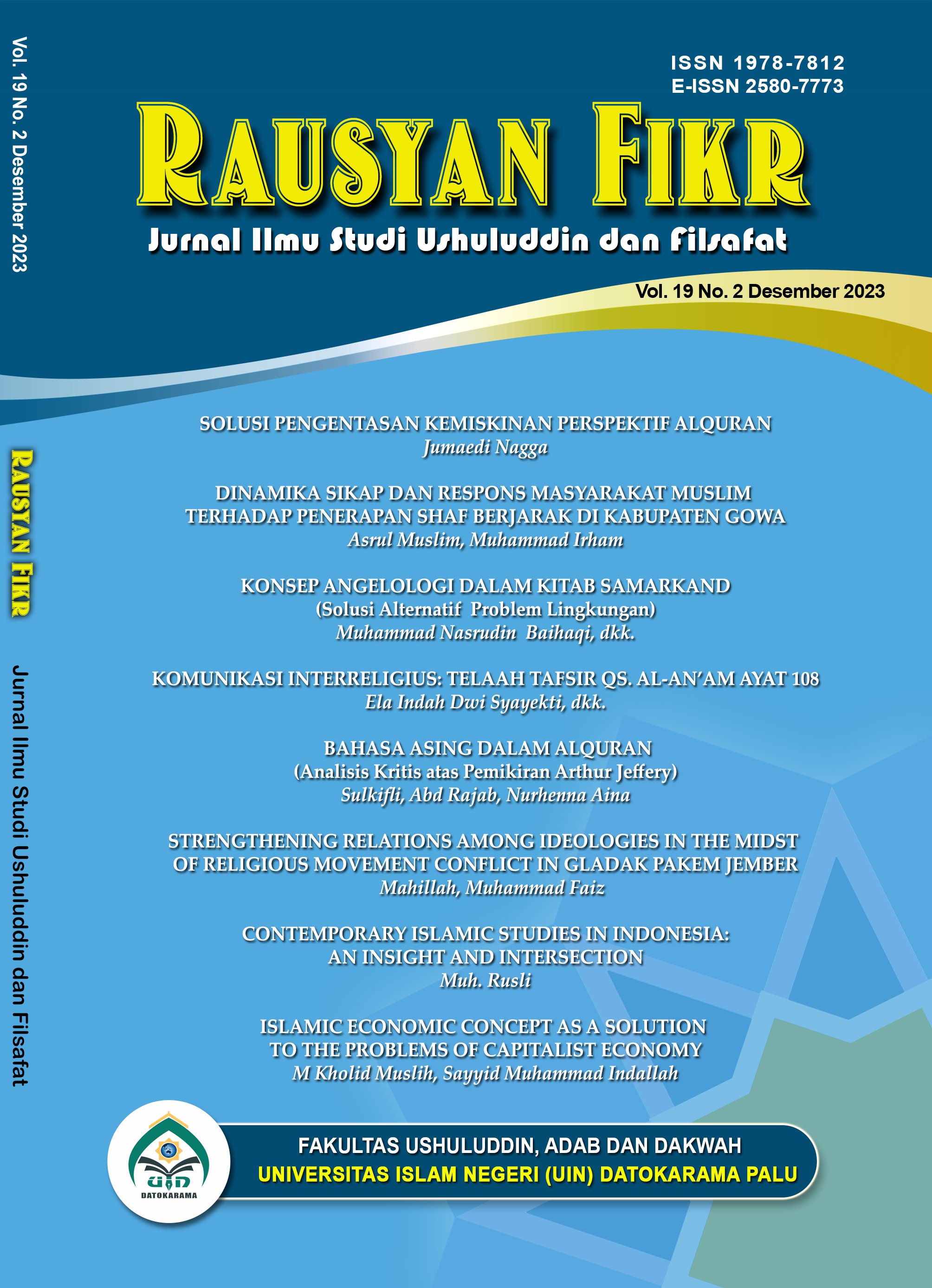CONTEMPORARY ISLAMIC STUDIES IN INDONESIA: AN INSIGHT AND INTERSECTION
Abstract
This article investigates the development of Islamic Studies in Indonesia over the course of time, focusing on such topics as how the Indonesian government has responded to the subject, the role that education has played, the new problems that the field faces, and how globalization has impacted the field. The following will be discussed as part of the course: the origins and evolution of the academic field of Islamic Studies; the influence that public policy has had on the development of Islamic Studies; the various religious organizations that are responsible for the dissemination of Islamic teachings; research strategies and scholarly networks in Indonesian Islamic Studies; the influence that education has had on Islamic Studies; and the many urgent issues that are currently confronting the academic field. The study finds out that globalization and the media are two factors that have lately contributed to the expansion of Islamic Studies in Indonesia.
References
Abdullah, M. Amin. “Islamic Studies in Higher Education in Indonesia: Challenges, Impact, and Prospects for the World Community.” al-jami’ah: Journal of Islamic Studies, Vol. 55, No. 2 (2017): 391–426 https://doi.org/10.14421/ajis.2017.552.391-426
_______. “Religion, Science, and Culture: An Integrated, Interconnected Paradigm of Science.” al-jami’ah: Journal of Islamic Studies, Vol. 52, No. 1 (2014): 175–203 https://aljamiah.or.id/index.php/AJIS/article/view/30
Asiah T., Siti. “Transformation of Islamic Education Quality through Regional Autonomy in Bone Bolango Regency, Gorontalo Province.” Jurnal Pendidikan Islam, Vol. 6, No. 1 (2017): 51. https://ejournal.uin-suka.ac.id/tarbiyah/index.php/JPI/article/view/1454
van Bruinessen, Martin. “Traditionalist and Islamist Pesantren in Contemporary Indonesia.” The Madrasa in Asia: Political Activism and Transnational Linkages. Amsterdam: Cambridge University Press, 2008. https://doi.org/10.1017/9789048501380.009
Eyadat, Zaid. “Islams: Between Dialoguing and Mainstreaming,” Sage Journal: Philosophy and Social Criticism, Vol. 38 Iss. 4–5 (2012): 507–16. https://doi.org/10.1177/0191453711435646
Hefner, Claire Marie. “Model-Model Prestasi: Perempuan Muslim dan Otoritas Agama di Madrasah Modernis di Indonesia.” Asian Studies Review, Vol. 40, No. 4 (2016): 564–582 https://doi.org/10.1080/10357823.2016.1229266
Hefner, Robert W. “Islam and Institutional Religious Freedom in Indonesia.” Religions, Vol. 12. Iss. 6 (2021). https://www.mdpi.com/2077-1444/12/6/415
Houben, Vincent J. “Southeast Asia and Islam,” THE ANNALS of the American Academy of Political and Social Science, Vol. 588, Iss. 1 (2003): 149–70. https://journals.sagepub.com/doi/10.1177/0002716203588001010
Howell, Julia D. “Muslims, the New Age and Marginal Religions in Indonesia: Changing Meanings of Religious Pluralism.” Sage Journal: Social Compass, Vol. 52, Iss. 4 (2005): 473–493. https://doi.org/10.1177/0037768605058151
Mukrimin. “Islamic Parties and the Politics of Constitutionalism in Indonesia,” Journal of Indonesian Islam. Vol. 6, Iss. 2 (2012): 367–90. https://jiis.uinsby.ac.id/index.php/JIIs/article/view/114
Pohl, Florian. “Negotiating Religious and National Identities in Contemporary Indonesian Islamic Education.” Cross Currents, Vol. 61, Iss. 3 (2011): 399–414 https://doi.org/10.1111/j.1939-3881.2011.00189.x
Sakai, Minako. “Still Remembering the Origins: The Continuity of Syncretic Islamic Practice among the Gumay (Gumai) in South Sumatra, Indonesia,” Indonesia and the Malay World, Vol. 45, Iss. 131 (2017): 44–65. https://doi.org/10.1080/13639811.2017.1274561
Sidel, John T. “‘It Takes a Madrasah’?: Habermas Meets Bourdieu in Indonesia,” South East Asia Research, Vol. 9, Iss. 1 (2001): 109–122 https://doi.org/10.5367/000000001101297342.
Steenbrink, Karel. “Academic Study of Indonesian Islam: A Biographical Account, 1970-2014.” al-jami’ah: Journal of Islamic Studies, Vol. 53, No. 2 (2015): 337–365. https://doi.org/10.14421/ajis.2015.532.337-365
















